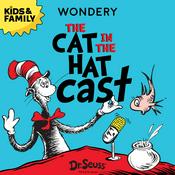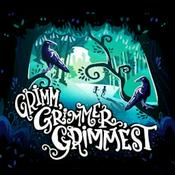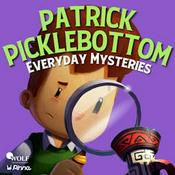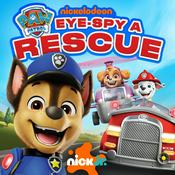42 episodes

Dog food ratings and marketing strategies
23/12/2025 | 34 mins.
In this conversation, Clayton and Sam discuss the challenges and strategies in the pet food industry, focusing on how brands can improve their ratings on platforms like All About Dog Food. They explore the importance of consumer perception, the effectiveness of discounting strategies, and the shift from direct-to-consumer (DTC) to retail. The discussion also highlights the significance of packaging and merchandising in attracting customers, as well as the need for innovation in marketing approaches.takeawaysHaving an education-based approach to marketing is crucial.Consumer perception can greatly influence sales, regardless of ratings.Discounting strategies can lower customer acquisition costs but may lead to high churn rates.The shift from DTC to retail is becoming more common among pet food companies.Effective packaging and merchandising can significantly impact retail success.Brands need to create compelling stories to connect with consumers.High ratings on platforms like All About Dog Food can be leveraged for marketing.Discounts should be substantial to attract customers, but they can devalue the product.Innovative product presentation is key to standing out in a crowded market.Merchandising should focus on making products visually striking on retail shelves.titlesNavigating Dog Food Ratings and Marketing StrategiesThe Role of Consumer Perception in Pet Food SalesSound Bites"How to beat All About Dog Food's rating?""You can't dive into every single hole.""The packaging needs to pop on the shelf."

The Hybrid Feeding Phenomena
16/12/2025 | 26 mins.
In this episode, Clayton Payne and Sam discuss the latest trends in pet feeding, focusing on a survey that reveals the popularity of hybrid feeding among pet parents. They explore the implications of this trend, the rise of new pet food delivery services like The Pets Table, and the challenges faced by independent veterinarians in a competitive market. The conversation emphasizes the importance of brand loyalty, retail presence, and the need for veterinarians to educate consumers in the digital age.takeawaysHybrid feeding is the most popular choice among pet parents.The rise of cooked food may challenge raw feeding's popularity.New entrants like The Pets Table pose a threat to existing pet food brands.Brand loyalty in pet food is less pronounced than in traditional brands.Retail presence is crucial for building consumer trust in pet food brands.Independent veterinarians need to improve their product offerings.Veterinarians should focus on better margins and pricing strategies.Consumer education is essential in the digital age.Veterinarians must adapt to the changing landscape of pet care.Building a personal brand is important for professionals in the industry.titlesPet Feeding Trends: What Are Pet Parents Choosing?The Hybrid Feeding Phenomenon: Insights and ImplicationsSound Bites"I think it's peaked.""They are a threat.""Thanks, Sue."Chapters00:00Pet Feeding Trends: A Survey Insight04:04The Rise of Cooked Food in Pet Nutrition05:28The Impact of New Entrants in Pet Food Delivery09:01Brand Loyalty in Pet Food: A Comparison12:02The Importance of Retail Presence for Pet Brands14:48Challenges for Independent Veterinarians22:10The Need for Consumer Education in Veterinary Practices

Should Discounters hit Pet harder??
09/12/2025 | 23 mins.
In this conversation, Clayton and Sam discuss the current state of pet food marketing and retail dynamics in the pet industry. They explore the lack of innovation in pet food marketing, the repetitive nature of advertising strategies, and the need for brands to differentiate themselves in a crowded market. The discussion also delves into the challenges faced by retailers like B & M and Pets at Home, emphasizing the importance of understanding consumer preferences and the evolving landscape of pet products.takeawaysPet food marketing has seen little innovation recently.Consumers are bored with repetitive marketing strategies.Brands need to differentiate themselves to stand out.Fun and engaging marketing could revitalize the industry.Retailers must adapt to changing consumer preferences.Pets at Home struggles with brand identity and market positioning.B & M's business model may not support premium pet products.Consumers prefer choices over own-label products.The pet food market is becoming increasingly competitive.Understanding consumer behavior is crucial for success.titlesRevolutionizing Pet Food MarketingThe Future of Pet RetailSound Bites"Be more flamboyant and more flashy.""Consumers want choices.""You feel conned?"

The Changing Demographics of Pet Food
02/12/2025 | 26 mins.
In this conversation, Clayton and Sam discuss the booming pet industry, focusing on the increasing populations of dogs and cats in the U.S. and the rising spending on pet care. They explore the changing demographics of pet owners, particularly the shift towards younger, male cat owners, and the implications for product development. The discussion then shifts to innovations in pet food, particularly the introduction of microbial proteins, and the challenges of consumer acceptance. Finally, they examine the future of vegan pet food and the sustainability of these trends in the market.takeawaysThe U.S. dog population is projected to reach 87.3 million by 2025.Pet owners are spending an average of $1,700 per year on their pets.Vet care accounts for a significant portion of pet spending, with dog owners spending more than cat owners.The demographics of pet owners are changing, with more young men adopting cats.There is a growing trend towards premiumization in pet products, especially for cats.Microbial proteins are emerging as a novel protein source in pet food.Consumer acceptance of new protein sources like microbial protein is uncertain.The vegan pet food market is not expected to grow significantly in the future.There is a difference in purchasing behavior between male and female pet owners.The sustainability of innovations in pet food is a key concern for the industry.titlesThe Booming Pet Industry: Trends and InsightsChanging Demographics: Who's Buying Pets Today?Sound Bites"$1,700 is nothing, is it?""America are expensive man.""Cheers, Duke."

Purina's Market Dynamics
25/11/2025 | 24 mins.
In this episode, Clayton and Sam discuss the current state of the pet food market, focusing on Purina's mixed performance and the challenges faced by veterinary care in the UK. They explore the implications of rising prices, lack of transparency, and the impact of corporate ownership on independent practices. The conversation also delves into regulatory changes proposed by the CMA aimed at improving price transparency and competition in the veterinary sector.takeawaysPurina's sales have dropped, but they are gaining market share.The pet food market is experiencing mixed growth, particularly in Europe.High veterinary prices have risen significantly over the years.Lack of transparency in veterinary pricing is a major concern.Corporate vets charge more than independent practices.Pet owners may pay double for medicines at vets compared to online.The CMA is proposing mandatory price transparency for vets.Independent vets are struggling to compete with corporate practices.Regulatory changes may favor larger corporate veterinary practices.The market is increasingly dominated by a few major players.titlesPurina's Market Dynamics: A Mixed BagChallenges in Veterinary Care: Transparency and PricingSound Bites"Purina's pet care sales are down.""High prices have risen by 63%.""The CMA has written 21 proposals."
More Kids & Family podcasts
Trending Kids & Family podcasts
About Real Pet Industry News
Listen to Real Pet Industry News, Wow in the World and many other podcasts from around the world with the radio.net app
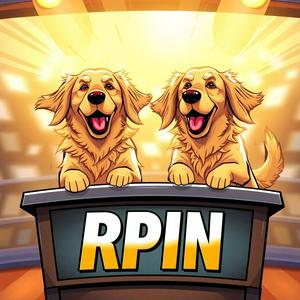
Get the free radio.net app
- Stations and podcasts to bookmark
- Stream via Wi-Fi or Bluetooth
- Supports Carplay & Android Auto
- Many other app features
Get the free radio.net app
- Stations and podcasts to bookmark
- Stream via Wi-Fi or Bluetooth
- Supports Carplay & Android Auto
- Many other app features


Real Pet Industry News
download the app,
start listening.




